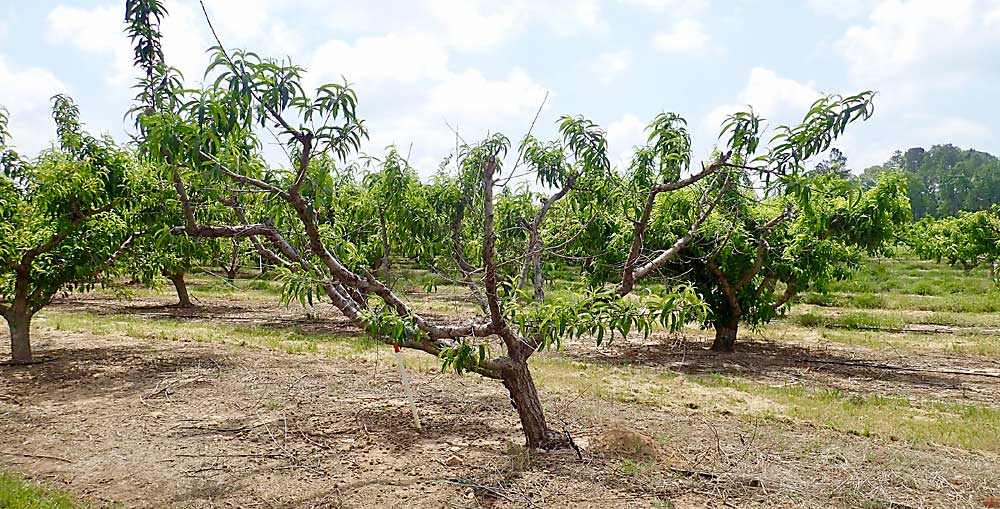
This is a very bad year for Georgia peaches.
“We’ve got about 5 percent of a peach crop this year … and we were not the only ones who lost like this. It was everyone in Georgia,” said Lanier Pearson of Pearson Farm. “You won’t be able to find a Georgia peach in a grocery store this summer.”
With her husband, Lawton, and his parents, they grow about 1,400 acres of peaches over three counties in the prime growing region of central Georgia. All of those acres suffered a warm winter, providing insufficient chill for some varieties and early bloom in others, which were then hit by two spring frosts. That one-two punch of climate challenges has some questioning the future viability of peach production in the Peach State.
“People have been growing peaches here for hundreds of years, and on this particular farm in Peach County for more than a hundred years,” Pearson said. “But this year, for the first time, I asked my husband, ‘Is it possible there’s a scenario where this becomes a place where you don’t grow peaches anymore?’”
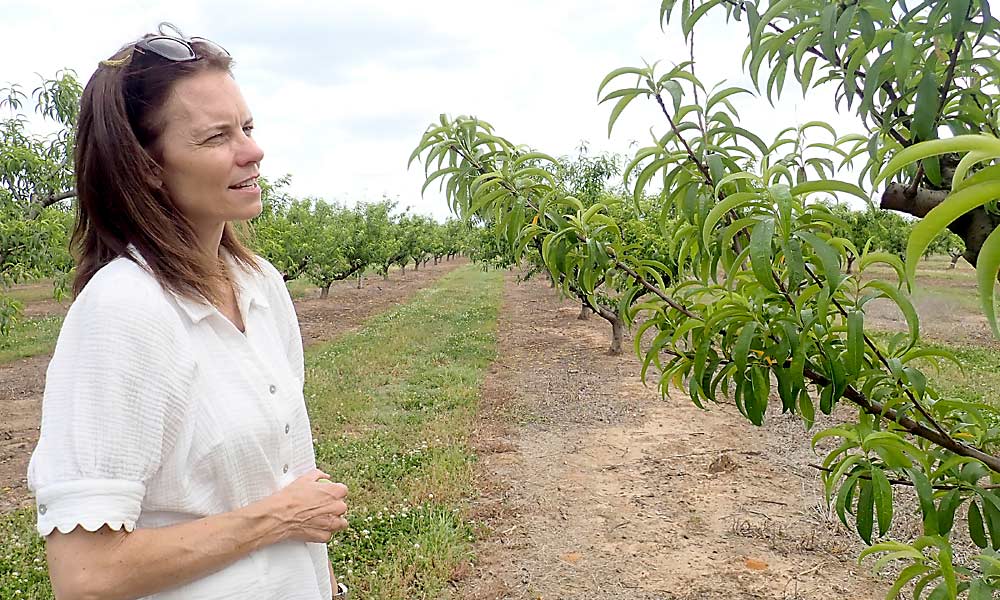
Running hot and cold
As Georgia’s winter season warms, some peach cultivars may not get the chill hours they need to set a full crop. The average temperature in the state has risen by about 2.5 degrees Fahrenheit over the past six decades, according to Pam Knox, agricultural climatologist and director of the University of Georgia’s weather network. At the same time, frost dates are also changing.
“The last frost in spring is getting a little bit earlier, and the first frost in the fall is getting a little bit later, so the growing season length has increased,” she said.
Varieties with lower chill-hour requirements have become good options for warming winters, but they bloom earlier, which makes them vulnerable to spring frosts. Peaches that bloom later, reducing the risk from early-season frost, require a number of chill hours that Georgia winters are becoming less likely to reach.
“When they don’t get the chill hours they need, the trees are just hard to predict, including the fruit quality,” Pearson said. “Sometimes, they’ll have a weird shape to them, they’ll be smaller, or there won’t be as many.”
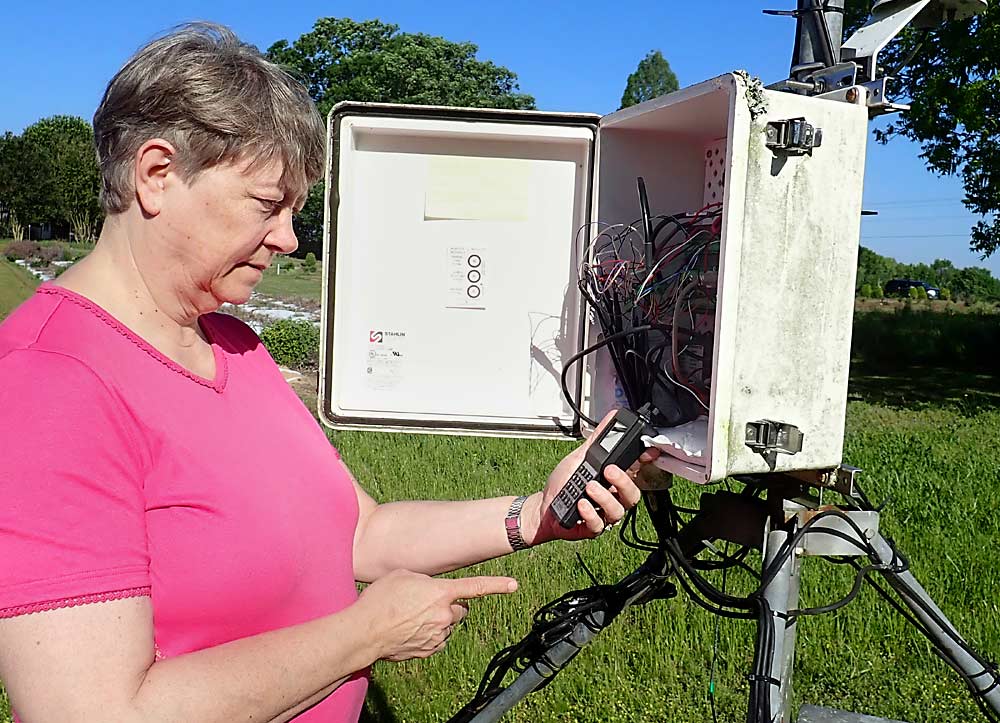
Pearson Farm currently grows about 50 peach varieties, with a wide range of chill-hour requirements, largely to ensure a good harvest when the weather doesn’t cooperate. But too many things worked against the Georgia peach crop this year, she said. The later-season varieties never reached sufficient chill hours, including some that had yet to come out of dormancy by mid-May; a hard frost in early spring killed the flowers of the early bloomers; and then a second hard frost wiped out the then-blooming flowers of midseason cultivars.
On top of that, a 6-degree cold snap swept through central Georgia in late December, said Dario Chavez, UGA associate professor in peach research and extension. Walking through the almost completely peachless trees in his research orchard, he pointed out barren branches.
“These trees were completely healthy before winter, but that frigid air created a lot of bacterial canker damage, and now we are seeing a lot of limb death,” Chavez said.
Old tricks, new tricks
Georgia peach growers are trying a wide range of tactics to prepare for an uncertain weather future, Knox said. “They know it’s going to get warmer, but there’s that year-to-year variability that, of course, is the bane of farmers. That’s what they have to work with every year.”
For Pearson Farm, preparation means keeping an eye on the weather, particularly for hard spring frosts, Pearson said. When frosts appear imminent, her husband and the orchard crew get to work.
“Lawton was the first (among Georgia peach growers) to have wind machines out in some of these orchards — like they use in California — to keep the air moving and the cold from settling,” she said. “He uses irrigation on those nights (running water on the ground), and the temperature of the water helps warm the air, because a lot of times just 1 degree makes a difference.”
They also place hay bales throughout the orchard and set them ablaze, partly for the heat but also for the smoke that helps hold the heat at ground level.
“They’ll stay out there all night doing everything in their power to save the peach crop,” she said, “but there are some nights when it’s out of their control.”
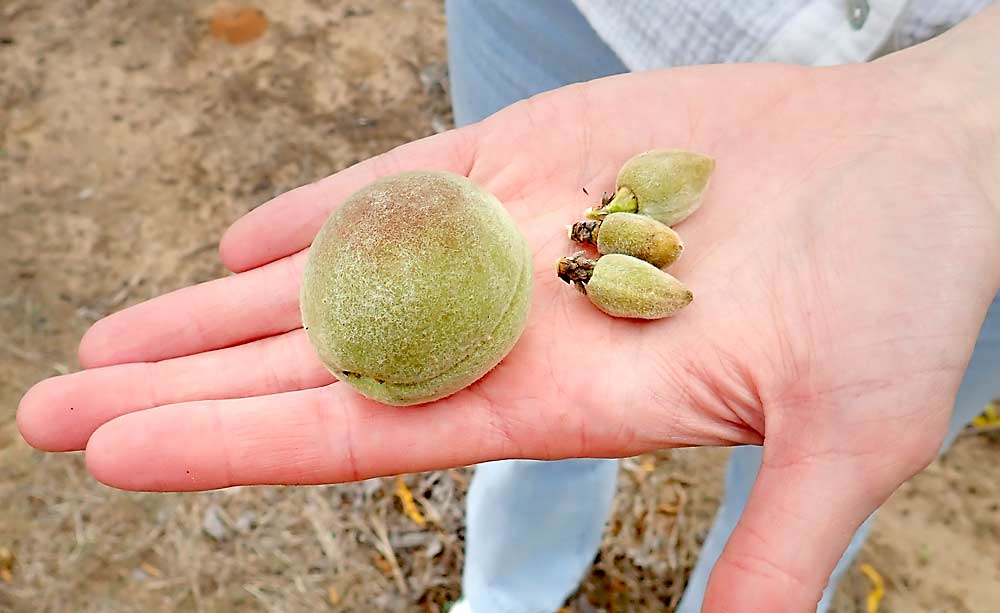
The farm is also hedging its bets by constantly searching for new varieties. Pearson said they are testing earlier varieties, later varieties and those that require more chill or less chill: “Anything that might handle a late frost or warmer winter better.”
They are also considering replacing some of the peaches with a new crop, possibly persimmons, which “grow exactly like a peach — except in harvesting them you clip persimmons, and you pull peaches,” she said. Chestnuts are another option.
To protect flowers from frost, Chavez is conducting research on a sprayed-on insulation made from wood pulp, developed at Washington State University to protect cherry and apple blossoms. He and a colleague have tested the materials for three years, first applying them to blueberry and peach blossoms using a typical airblast sprayer and later with an electrostatic sprayer. Results have been mixed.
“Sometimes we would get an awesome effect, and sometimes we didn’t see it. It was all over the place,” Chavez said. He planned to try different material-application techniques this past spring, but his field studies were suspended after the supplier signed a commercialization agreement with WSU.
“I would have loved to have deployed it in this freeze, just to see what it did, but I didn’t have any material,” Chavez said. “I think there is something there, and I’m happy to see it, but it needs more evaluation.”
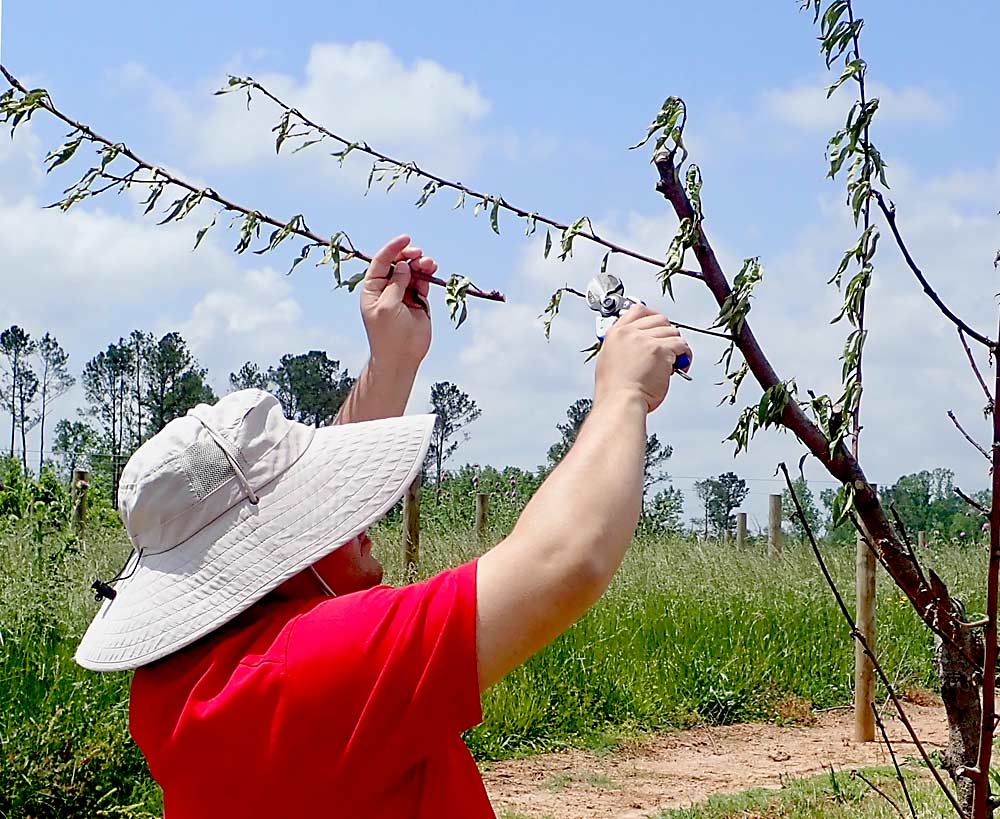
His UGA group is also investigating a new method designed to manipulate chill-hour requirements by using plant growth regulators that mimic some of the chill that’s missing. One such product, Dormex (hydrogen cyanamide), requires judicious use to avoid tree injury, Chavez said.
Chavez sees enough promise, however, that he has worked with Pearson Farm to trial it on trees that don’t receive sufficient chill hours.
“The untreated (trees) were still dormant in February, and the (treated trees) were already blooming,” he said. With more study, he hopes to help create comprehensive management procedures that provide consistently good results.
In addition to that work, Chavez and his research group are evaluating rootstocks — notably the dwarfing varieties MP-29 and Controller 6, as well as P-22, which is similar to Guardian but has more tolerance to Armillaria. Meanwhile, they took inspiration from Michigan State University’s Greg Lang and planted their first high-density peach planting, using both spindle and UFO training systems.
In the meantime, life at the Pearson orchard is quiet.
“We should be picking full-swing right now, and the packing shift should be running. We should be going,” Pearson said in May.
Instead, the crews were heading out the following day to fill only about 20 25-pound boxes.
“Things do change. There are places where they used to grow something, but now it’s not ideal to grow it anymore. You’ve seen that with the orange crop in some of Florida. So, we’ll see,” she said. “The only thing we can do is wait and see.”
—by Leslie Mertz

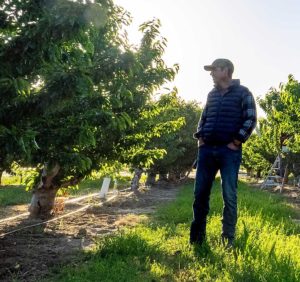
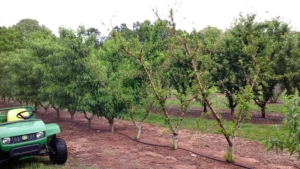
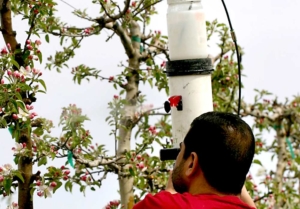





We deal with this each year, use the correct root stock and the right type of fruiting tree it no longer becomes a issue
In Arizona the issue becomes the UV Radiation that is at record levels